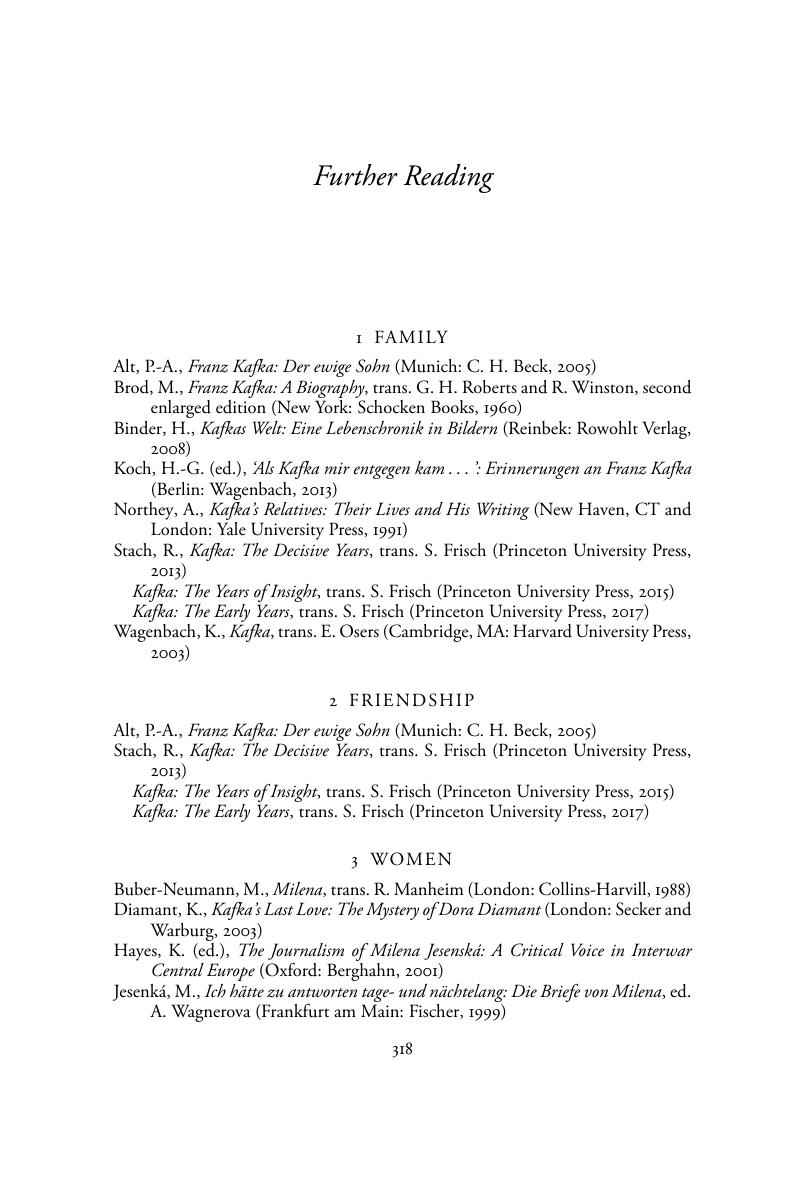Book contents
- Franz Kafka in Context
- Franz Kafka in Context
- Copyright page
- Contents
- Illustrations
- Notes on Contributors
- Chronology
- Abbreviations and Note on the Texts
- Introduction
- Part I Life and Work
- Part II Art and Literature
- Part III Politics, Culture, History
- Part IV Reception and Influence
- Further Reading
- Index
- References
Further Reading
Published online by Cambridge University Press: 08 December 2017
- Franz Kafka in Context
- Franz Kafka in Context
- Copyright page
- Contents
- Illustrations
- Notes on Contributors
- Chronology
- Abbreviations and Note on the Texts
- Introduction
- Part I Life and Work
- Part II Art and Literature
- Part III Politics, Culture, History
- Part IV Reception and Influence
- Further Reading
- Index
- References
Summary

- Type
- Chapter
- Information
- Franz Kafka in Context , pp. 318 - 330Publisher: Cambridge University PressPrint publication year: 2017



